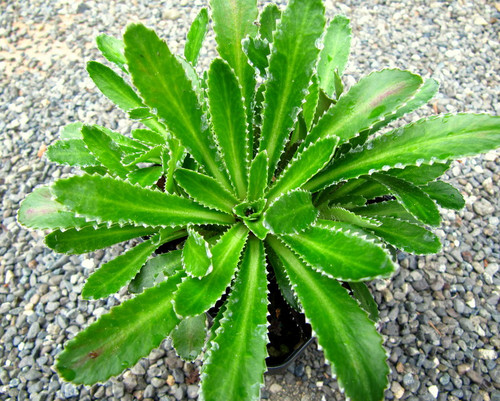Pot Size: 3.5"
Accepted Scientific Name:
Saxifraga andrewsii
Origin and Habitat
Saxifraga andrewsii, commonly known as Andrew's saxifrage or rockbreak, is native to the cool, moist regions of the northeastern United States and southeastern Canada, especially the Appalachian Mountains and Great Lakes area. It grows naturally in shaded, rocky outcrops, moist cliff faces, and forested slopes where it benefits from high humidity, dappled light, and excellent drainage. It is well-adapted to niches with shallow soil and abundant organic matter, often growing in mossy crevices where water is available but quickly drains away. This plant has evolved to thrive in challenging environments with limited soil and variable moisture, making it ideal for rock gardens and woodland borders.
Description
Saxifraga andrewsii forms a compact basal rosette of dark green, scalloped leaves that reach up to 4 inches across. The foliage is evergreen and slightly leathery in texture. In autumn, it sends up wiry stems up to 6–10 inches tall bearing delicate white flowers with five petals, often finely marked with red or green spots. The blossoms are airy and star-like, giving a soft contrast to the plant’s dense, grounded form.
Cultivation
Zone USDA Zones 3–7
Temperature Hardy from –34°C to 20°C
Growth Rate Slow to moderate
Soil Prefers well-drained, humus-rich soil with added pumice for sharp drainage
Watering Keep evenly moist but not waterlogged; do not allow soil to fully dry out
Fertilizing Apply a diluted balanced fertilizer every 2–3 weeks during active growth
Light Partial shade to dappled sun; avoid intense midday exposure
Pests and Diseases Generally pest-free; may be susceptible to rot in overly wet conditions
Propagation
Propagate by seed, division of clumps in spring, or by detaching and rooting offsets. Ensure good drainage during rooting.



